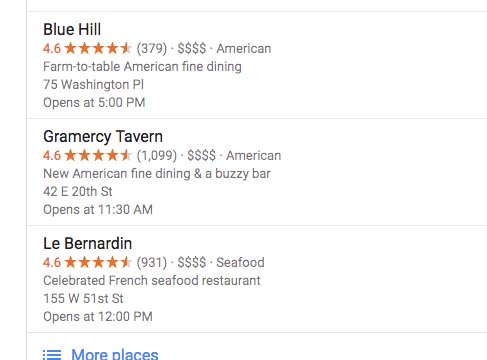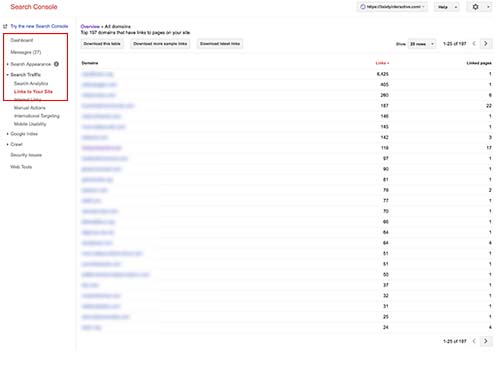Like you don’t have enough to do, now there’s this!
Negative SEO is real and its probably the most compelling reason for you to get into the habit of regularly reviewing what is going on with your website.
[socialpug_tweet tweet=”Negative SEO probably best reason to regularly review your site’s data #SmallBiz #seo”style=”2″]
What Is Negative SEO
At its most basic level, Negative SEO is an activity that someone engages in to reduce your website’s visibility on the search engines.
Let’s say that your site has a few pages that are important to your business. These pages are ranking on the first page for very important key-phrases, and they’re sending a lot of business to you.
Now, let’s say that you’re in a competitive industry. One of your competitors would do anything to get an advantage over your business.
[socialpug_tweet tweet=”Negative SEO is an activity that someone engages in to reduce your website’s visibility on the search engines #seo #SmallBiz” style=”2″]
Then all of a sudden all of those pages that were ranking on the first page of Google sending all that business to you are no longer on the first page. In fact, they’re not on the second or even the third page of Google.
Can you feel that pit in your stomach start to grow?
Negative SEO started gaining some notoriety some years ago and then seemed to diminish. At least until about a year or two, ago. That’s when the SEO industry started to see a resurgence in Negative SEO activities.
There are a lot of activities that fall under the umbrella of Negative SEO. Most of the activities are off-site, but some activities are on-site.
Off-Site Negative SEO Tactics
These activities are the easiest to perform so; naturally, they are the most prevalent used. As the name implies, off-site tactics are things that people can do to impact your SEO ranking without ever touching your site.
We’re going to review the 3 most common forms of off-site tactics that get used.
Spammy Backlinks
Backlinks are one of the most important ranking signals for SEO. Google considers the number of and quality of links pointing to a website’s page to be a “vote” that the information on the page receiving the links is good quality and is informative on the topic of the page.
[socialpug_tweet tweet=”Spammy backlinks one of most popular tactics for Negative #SEO #SmallBiz” style=”2″]
As Google views it if other people put a link to your page, then the content must be good.
However, just like everything else, because backlinks are such an important ranking signal, some people started to game the system and started using link farms and poor quality directories to send massive quantities of links to their sites. These backlinks have become known as spam links.
 Spam links became such a problem that in 2012 Google released an update to their algorithm called Penguin. The reason for this update was to reduce the use of spammy link building tactics.
Spam links became such a problem that in 2012 Google released an update to their algorithm called Penguin. The reason for this update was to reduce the use of spammy link building tactics.
Today, there have been a number of iterations of the Penguin update, with each update increasing the pressure not to use spammy backlinks. Now, if your site has a larger quantity of spammy backlinks pointing to it, you can plan on receiving a penalty from Google, and your ranking will drop, sometimes considerably.
Because of the Penguin penalty, people will use this to create a negative impact on your site. They will create a bunch of links to your site from bad directories, and link farms essentially creating a situation where Google will issue a penalty on your site and drop your ranking position(s)
Content Scraping
This tactic’s focus is on the search engines view of duplicate content. Search engines will rarely show multiple versions of the same content which forces them to choose a page to put in their index. If there is no direction within the code of your site to identify the original or authoritative content, then the search engine will typically index the original content unless they come across the duplicate content first.
When someone uses the scraping tactic for Negative SEO, they will find a page or a number of pages on your site that are, typically, just released with new content. Pages link new products, new services or even new blog posts that have been put up on your site.
Then, they will copy all of the content on those pages and create a large number of other sites and duplicate your content on those pages.
The hope is that they will get Google’s bot to find their pages first, index their pages. By doing that, they will set up a situation where when Google’s bot hits your page, it will consider your site to be the duplicate content and consequently not rank your page.
Fake Reviews
 Though nobody knows all of the ranking signals that Google uses to rank a web page there are strong opinions that the reviews that a company receives are a signal that is gaining in importance for a company’s ranking ability.
Though nobody knows all of the ranking signals that Google uses to rank a web page there are strong opinions that the reviews that a company receives are a signal that is gaining in importance for a company’s ranking ability.
The search engine’s view of rankings is why the Fake Review tactic of Negative SEO works and unfortunately, this is a tactic that is multiplying.
When using this tactic, someone will often hire someone (i.e., a Fiverr freelancer) to post a lot of negative reviews of your Google My Business profile.
The Fake Review tactic has 2 components that make is uniquely nasty. First, it will negatively impact your search rankings. But the second component is worse. All of those negative reviews will hurt your online reputation and will affect the number of people that would engage with your business.
[socialpug_tweet tweet=”The fake review tactic of Negative #SEO #SmallBiz” style=”2″]
On-Site Negative SEO Tactics
Trying to do a Negative SEO attack through on-site tactics is a lot harder for the average person since any of the malicious activities here have to be done within the code or admin panel of the site itself. To pull this off, a person will have to hack your site or somehow (phishing attack) gain access to your admin panel or your CMS system.
The overall danger level for this type of an attack can be much larger than the off-site tactics because once someone is inside of your website, they have virtually full control of your site. They could:
- Infect your site with malware
- Inject spam links across your site
- Change content on your site
- Edit your robots.txt file
- And much much more
How To Prevent Negative SEO
It’s true that an ounce of prevention is worth a pound of cure. You’ll be much better off if you take the precautionary steps to prevent Negative SEO as opposed to having to clean up after it. I’ll review a couple of the most important things that you can do, below.
[socialpug_tweet tweet=”Tips for preventing Negative #SEO attacks on your site #SmallBiz” style=”2″]
Google’s Search Console
 account set up with Google’s Search Console, set one up immediately. This tool will give you a lot of options for email alerts that you can set up to keep you informed
account set up with Google’s Search Console, set one up immediately. This tool will give you a lot of options for email alerts that you can set up to keep you informed
Monitor Backlinks
There are a number of ways that you can monitor backlinks to your site. Find a tool that is easy to use and fits your budget. Regardless of the tool that you choose, most of all, pay attention to the information that you get from the tool. It doesn’t do any good to set up a tool to use and then not pay attention to the data. Here are a couple of tools that work well for this:
Monitor Duplicate Content
There are a couple of different ways that you can monitor your content. None of them are perfect, but they are better than not doing anything.
- Google Alerts: Enter some of the content that you think might be copied and have Google Alerts email you when they detect that content.
- Copyscape: This is a tool that you can enter your website domain, and it will let you know if your content is being used somewhere else.
Monitor Reviews
Remember, when it comes to reviews there are a lot of places to monitor. Depending on your industry, you could have business profiles on Yelp, Google+ Local, TripAdvisor, Angie’s List, OpenTable (and much more). It can be a bit overwhelming, but there are a couple of tools that can help:
Site Hacks
With the prevalence of CMS (content management systems) platforms like WordPress, Drupal, Joomla and many more, we’re seeing the biggest problem being sites that aren’t being kept up-to-date. As an example, in 2016 WordPress had 26 updates (many were security updates) to its platform. In addition to the platform updates, it’s also important to make sure that any plugins or extensions that have been used in your site are kept up-to-date as well.
HTTPS: Google has been pushing website owners to switch over to a secure domain for quite some time, now. They’re not just for e-commerce sites anymore. Getting an SSL will help reduce the hack-ability of your website. Here’s some more information on HTTPS.
Finally, 123456 is NOT a password so stop using it. When someone tries to hack your site here are the passwords that they are going to try, in order
- 123456
- 123456789
- qwerty
- 12345678
- 111111
- 1234567890
- 1234567
- password
Oh, and one more thing. Change your username from admin to something else…anything else. Everyone knows you’re using admin for your username.
What To Do If You’ve Been Hit w/Negative SEO
Based on the type of Negative SEO that has been used on your site, the path to repairing the damage will be different.
- Spammy Backlinks: The first step is to identify all of the spam links that are pointing to your site. You can do this inside of the Google Search Console, or with a variety of different tools. Once you’ve identified all of the bad links pointing to your site, use Google’s Disavow Tool to tell Google that you don’t want any part of these links and you’re not aware of how they were set up. Here are Google’s instructions on how to disavow these links.
- Content Scraping: Unfortunately, getting this fixed isn’t a fast process, but it is possible. Ultimately, you want to get Google to remove the duplicate content from their index. To get that to happen, you’ll have to file a DMCA (Digital Millenium Copyright Act) complaint against each page which has copied your content, with Google. You can do that here. Here’s Google’s guidance on this process.
- Fake Reviews: The first step is in determining if you should reply to the fake review or not. The standard for reviews is if you can’t respond professionally, don’t respond. If the fake review is over the top, just leave it and start working on the website that the review is on, to get it removed. Every site will have a different process to go through to get these reviews removed. Here’s Google’s guidance on getting bad reviews removed from their data.
